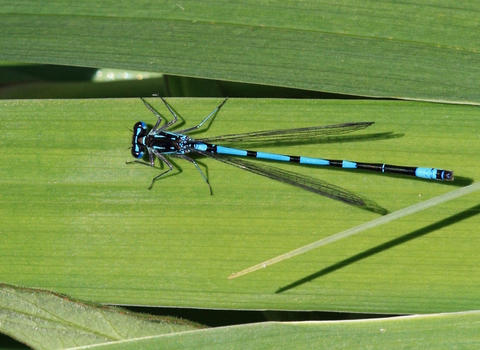
Male variable damselfly ©Vicky Nall
Variable damselfly
The variable damselfly looks a lot like the azure damselfly, but is much less common throughout most of the UK.
Scientific name
Coenagrion pulchellumWhen to see
May to AugustTop facts
About
One of several similar blue damselflies found in the UK, this slender insect has a patchy distribution across mainland Britain, but is very common in Ireland. Azure damselflies are most often found among plants on the banks of well-vegetated ditches, canals and ponds. They are rarely found by flowing water.What to look for
As the name suggests, the appearance of this damselfly can vary between individuals. Males are pale blue, with black streaks on the thorax (the main section of the body) and black bands on the abdomen (the long, slender ‘tail’ section).The best way to separate the seven species of blue damselfly in the UK is to look at the markings on the second section of the males’ abdomen, just behind the thorax. On a male variable damselfly, the black markings form a goblet - a ‘U’ shape joined to the black band by a line, like the stem of a wine glass. Another key feature is that the two blue lines on top of the thorax are often broken, resembling exclamation points.
Females can either be in a blue form, similar to the male, or a darker form with black markings over a dark green base. They are difficult to distinguish from the female azure damselfly.
